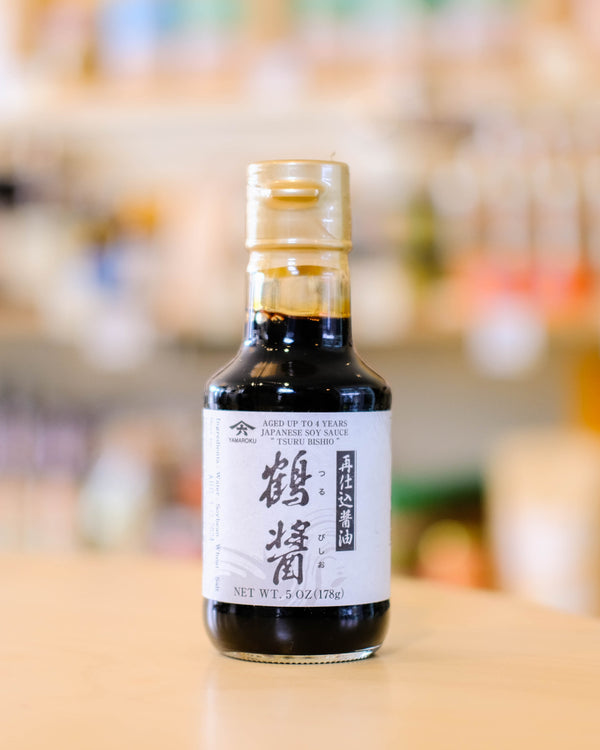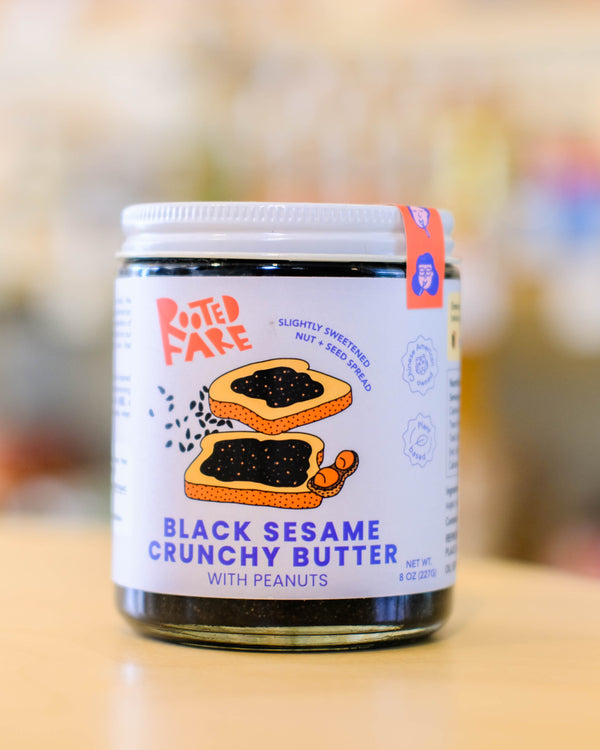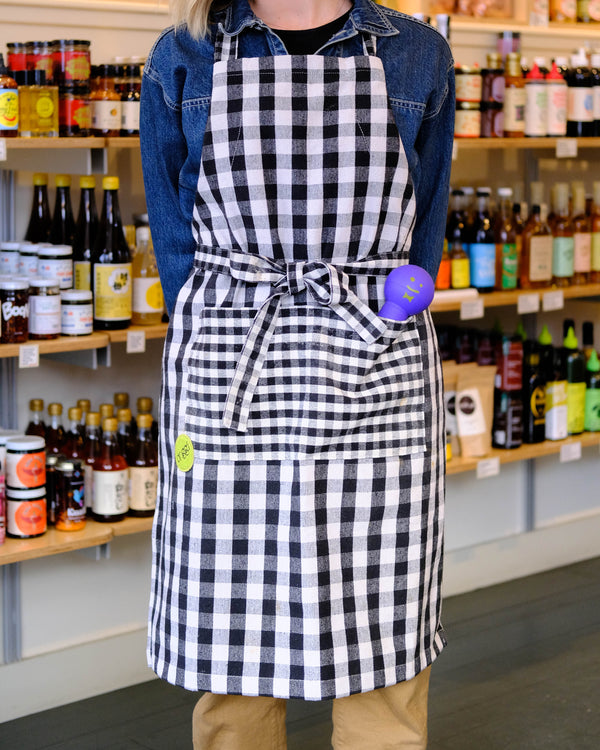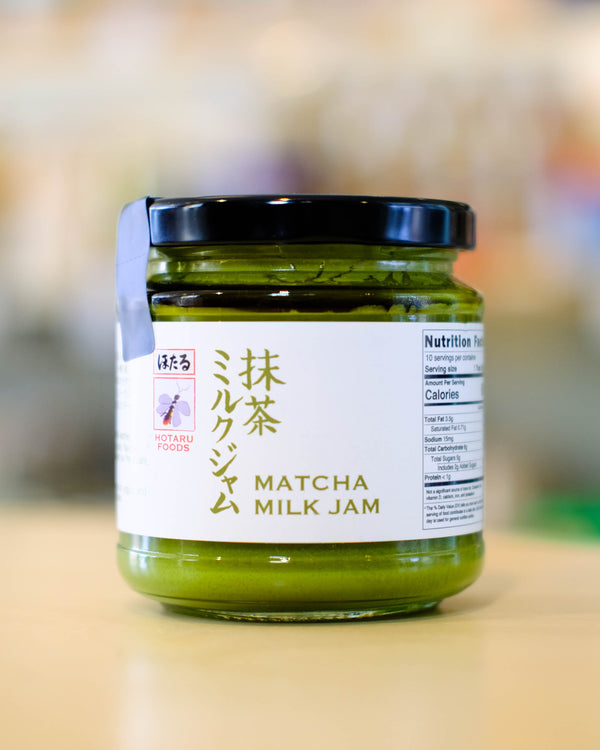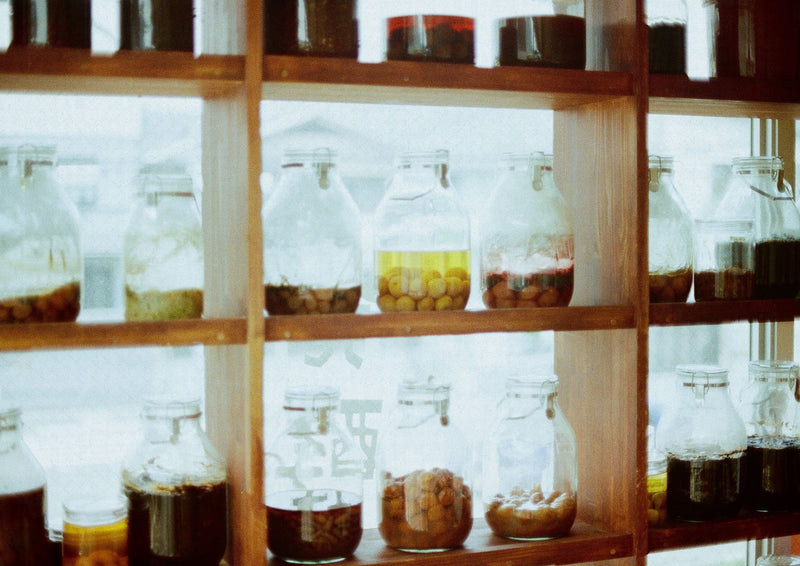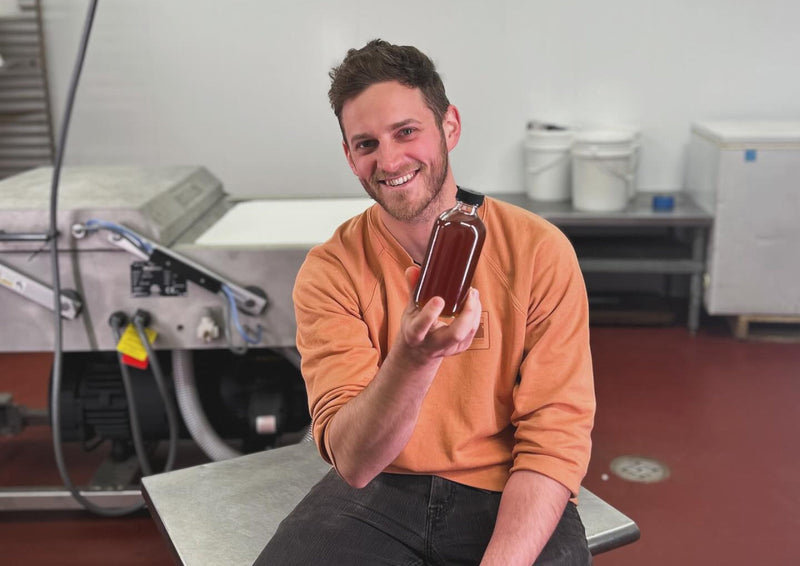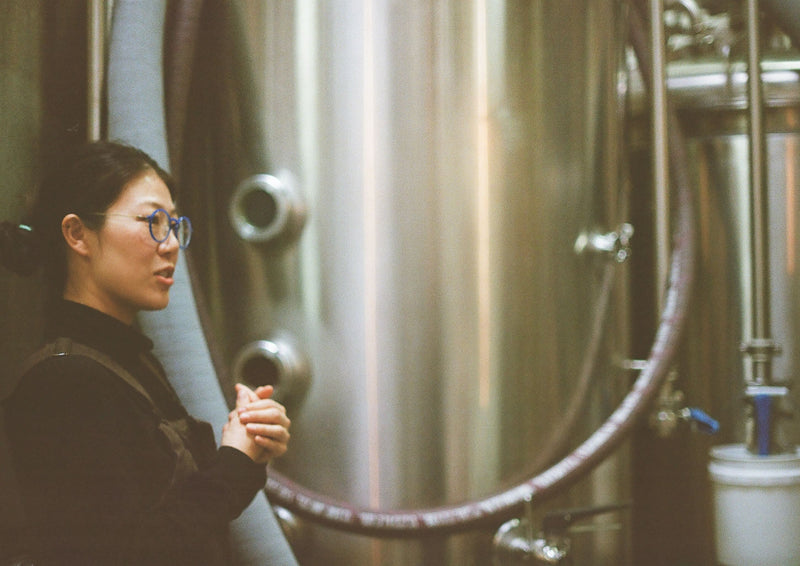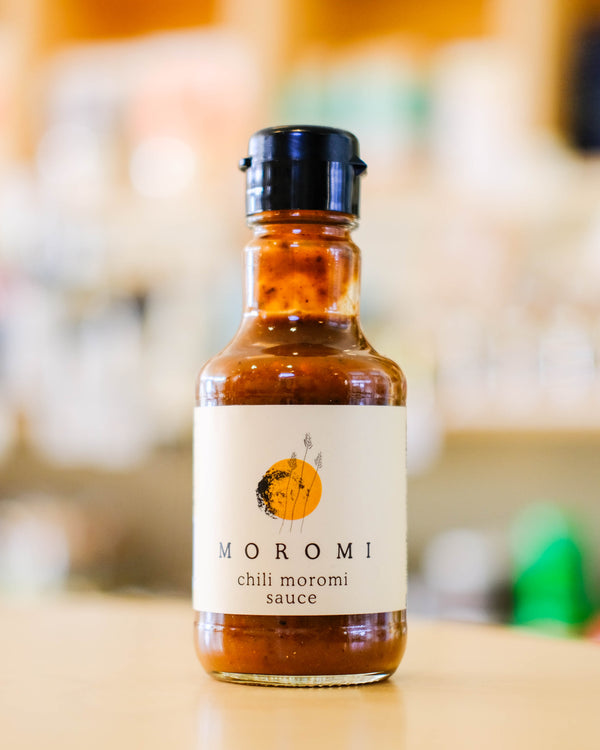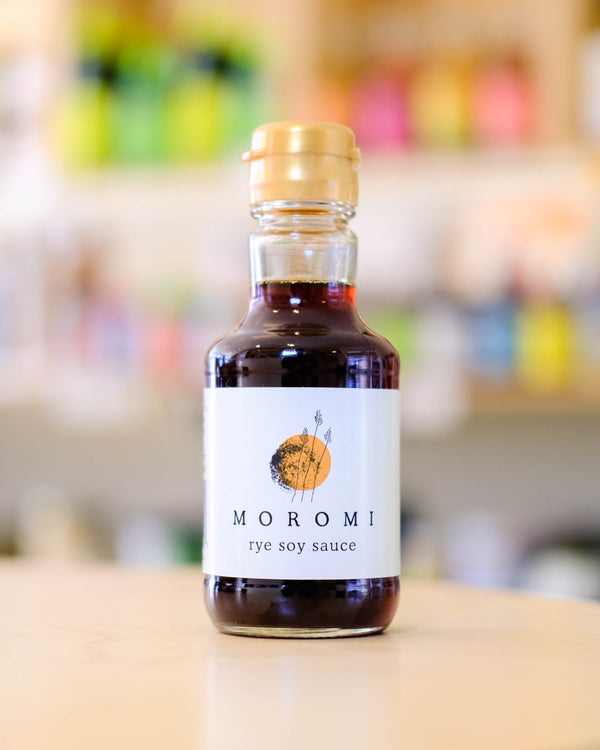Bob Florence is making soy sauce in Connecticut. With an eye toward local ingredients and attention to detail, Moromi is thriving, producing traditionally made soy sauce since 2017. Bob’s story is one of awareness and appreciation. He went from a corporate industrial job to renewable energy, to food production, landing on making soy sauce as a way to merge his creativity, interest in fermentation, and passion for sustainability. We sat down with Bob to chat through his past career and expertise, and his vision for Moromi.
Margot: You used to be a chemist—you were making industrial plastics and working on computers. Going from that day-to-day to being a soy sauce maker focusing on traditional fermentation—how did you get there and how are those worlds different for you?
Bob: Well, they’re connected. From a chemistry background, there's a certain amount of curiosity in taking ingredients and blending them together, looking at possible outcomes. I've always been curious about how things are made and how things come together. During my career, I spent a lot of time on the industrial side of the business and in Asia as part of that. I had a lot of exposure to Asian food and cuisine and traveled extensively through Japan and China, Thailand, Korea and India as part of my job. I moved to Shanghai and was running a regional office for General Electric.
After GE sold the division, I started helping Apple build factories in Asia, including in Japan and China. While I was doing that, I saw how we were taking a large swath of Chinese countryside and turning it into factories. It didn't particularly sit well with me. I started looking around at some of the renewable resource plays that were happening, particularly in San Francisco with a lot of startups. I looked at going into renewable fuels and chemicals, based on growing algae through fermentation. So you can see there's a connection right there around fermentation and making soy sauce. I helped grow a business with a small startup where we took algae, fed them sugar, they grow big and create a lot of oil, which is essentially vegetable oil. You can extract that and convert that oil into either cooking oils or fuels and chemicals as a form of biofuel.
I looked at other types of fermentation technologies and practices and eventually landed on soy sauce.
Margot: It sounds like you had a bit of a realization where you wanted to change your life a little bit.
Bob: Absolutely. If you look at the industry, the industrialization in China in the past 20 years, it was a pretty dramatic change. All the manufacturing in the world ended up getting planted down in the countryside of South China. When you looked at the beautiful farm fields and greenery, it all got converted into big gray factories for every business on the planet. It was an eye-opener. Should we be doing this and is there a better way to look at how we're utilizing resources? That became life-changing for me. It drove me to a much more sustainable business model, which is making food.
Margot: You studied at Chiba Shoyu in Japan. Can you talk about that experience? What was that process like and what did you take away from it?
Bob: I was making soy sauce out of my house, and I was making soy sauce that I thought was pretty good. I started sampling that to a friend of mine who owned a few restaurants locally here in Connecticut, and he put them on his menu—he is actually my business partner now, James Wayman. That was a stepping stone for me to have courage to go, hey, I'm making soy sauce! I got the confidence to contact fifteen CEOs of soy sauce makers in Japan, one of which was Chiba Shoyu. I just said hey, I'm Bob. I make soy sauce in America. I'm going to come to Japan and I’d love to talk to you about soy sauce making.
Of those fifteen, three of them said, sure, come on over and let's have a chat. So I got on a plane, I went over to Japan and met with the gentleman named Iida-san, who's the fifth generation president of Chiba Shoyu. He's a very creative individual and he does soy sauce and soy sauce blends for restaurants around the globe. He was very open with me. We exchanged samples and he gave me feedback on how it tasted, what it was like from a chemical analysis standpoint and how close it was to what would be a standard traditional kochi type of soy sauce in Japan.
He became a sounding board for me, and I was learning more about how to make soy sauce. After a few visits to Japan, Iida-san was visiting customers in New York and actually came over and looked at my set up at my house. I thought that was pretty amazing that he would take the interest to look at what I was doing. Today we talk pretty much weekly on different aspects of not only soy sauce making, but business in general. It's grown into quite a friendship and collaboration.
Margot: That's amazing. That sounds like a really meaningful relationship. Can you take me through your process of what making soy sauce looks like?
Bob: Making soy sauce is a two stage fermentation. It involves two major components which are soybeans and, in Japanese soy sauce, wheat. We roast wheat berries and crack them on a mill. You're basically barely lightly caramelizing the wheat and drying it quite extensively through roasting. With soybeans, you're steaming soybeans until they're soft but not mushy. Then you combine the soybeans and wheat in a koji room, which is a room where you can control the environmental factors of heat and humidity. You're inoculating them with spores of a mold known as koji. It's called Aspergillus Oryzae. Different varieties of koji have been grown in Japan for a long time
It’s a high temperature room, it's very warm, like 90 degrees and 90% humidity. You inoculate [the soybeans and wheat]. And of course, mold loves that environment. It grows very well. What it's doing is injecting enzymes into its food to digest it, basically eating the soybeans and wheat. The lifecycle of the mold is two days at that temperature and humidity. Then, it’s harvested and put into a bath of salt water.
You've probably seen some big vats of soy sauce or big wooden barrels of soy sauce being made. That's the second stage of the fermentation, allowing those soybeans and wheat and salt water in the presence of all those enzymes and other yeast and bacteria to help further digest the soybean proteins and the wheat carbohydrates into amino acids and sugars.You're digesting these big protein molecules into very small digestible amino acids and big carbohydrates starches into sugar molecules.
Margot: Okay, wow. What does that look like actually in your factory? What kind of vessels are you using? Are you using wood or stainless or something else?
Bob: So the salt content of making soy sauce is so high that even stainless will eventually corrode. I use a variety of wood and plastic containers, and I don't really have a strong preference. The plastic containers are actually easier to maintain and are much more consistent. I sometimes wonder how winemakers struggle with wood to make a consistent wine, quite frankly. Then there's a variety of different flavors that are imparted by wood that I'm not looking for in my soy sauce.
I know that others will use bourbon barrels or charred oak barrels, but I'm not looking to add those notes to my soy sauce. I'm much more looking for a pure soy umami flavor based on whole soybeans.
Margot: Your website says you make traditionally fermented soy sauce. What does that mean? What is non-traditionally fermented soy sauce?
Bob: There's probably three major categories of soy sauce that exist. One is what I would call traditional soy sauce making, which is made with whole organic soybeans. That’s a big distinction because the majority of soy sauce that's made industrially today is not made out of whole soybeans, but from soybean grits. When soybeans are harvested, they're squeezed for their oil. So if you look at the value proposition of a soybean, the oil is quite a valuable component. That process has been industrialized very well over the last 50 years. What's left over after crushing the soybeans is the grits, which is largely the protein component. Those grits then go into a lot of high volume industrial soy sauce that's manufactured today.
Then the third variety of soy sauce that's made and is non-traditional is chemical soy sauce. So you can also digest proteins by splitting the proteins with acid. So it's essentially just take soybeans or soybean grits and throw them in hydrochloric acid. That makes an amino sauce. That's what I’d call chemical soy sauce.
Soy sauce started with whole organic soybeans. Before pesticides and before industrialization. The flavor profile of whole soybean soy sauce is incredibly different from soy grits because you're also fermenting the oil component, which contributes fruity, flowery notes that come from the esters that are formed as you ferment the soy sauce, which aren't available when you extract the oil first before you make soy sauce. There’s a vast difference.
Margot: Wow, that’s very interesting—not all soy sauce is made the same at all! You're making a bunch of different kinds of soy sauce. You've got shoyu, ramp, chicken of the woods, rye, chili sauce. Where do you source your ingredients and what's important to you when you're sourcing?
Bob: My business partner James Wayman, is a chef and a very avid forager. Maitake mushrooms and chanterelles grow prolifically around Connecticut, at least when it rains. I grow cayenne pepper. We have eight farmers that are growing different crops for us locally now, including things like cayenne pepper. We work with a kelp farmer, Stonington Kelp company, for sugar kelp down the road. I’ve been trying to get more local agricultural input into my soy sauce. I wouldn't say I've achieved that a hundred percent, but we're crawling toward that goal.
We source organic soybeans from the Midwest where they grow well and they don't grow particularly well here. We source organic wheat and rye from Maine Grains and a couple of local farmers. It's been interesting to expand our agricultural footprint as we've grown our business.
Margot: I love that focus on local sourcing! Where do you find your joy in all of this?
Bob: I like making stuff. Just making things makes me very happy—the process of doing things.
I'm trying to make something that is really capturing flavor, the most flavorful soy sauce that I possibly can make based on the ingredients that I can find. I find great joy in achieving that. Like I pressed a sugar kelp soy sauce this past week that I think is one of my very best. I'm very proud of that.
Margot: And we’re glad that you’re doing it! Thank you so much for your time, Bob!
Try Moromi’s classic shoyu, chili sauce, or their rye soy sauce—two of our shop faves.




